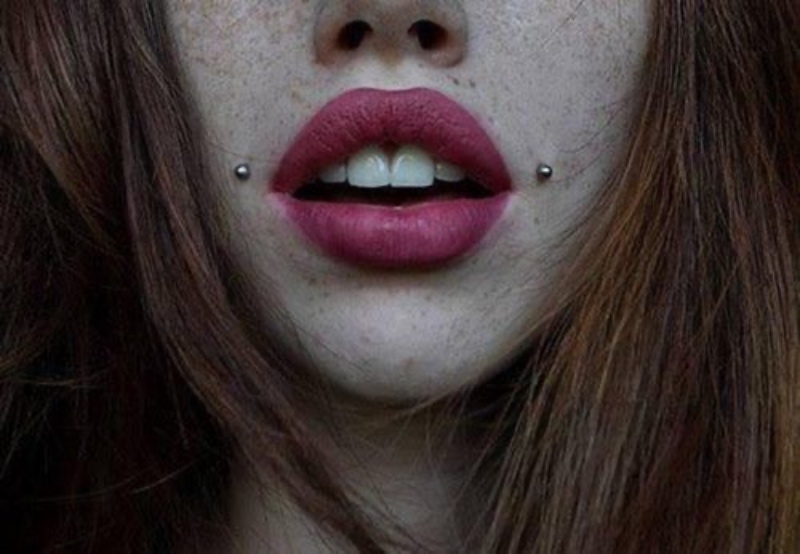Piercings have been a form of body modification for centuries, serving various purposes such as religious, cultural, self-expression, and aesthetics. Over time, society has become more accepting of piercings as a part of everyday life. In this article, we will explore the Dahlia Piercing and the necessary care during the healing process.
Table of Contents
ToggleWhat is Dahlia Piercing?
Dahlia Piercing, also known as “Dahlia Bites,” is a double facial piercing located on each side of the mouth or near the corners of the lips. The name “Dahlia” has its origins in the dark and intriguing story of the infamous “Black Dahlia” murders in California. This piercing is also referred to as “Joker Piercings” or “Joker Bites” due to its resemblance to the scars of the comic book character, The Joker.
How is Dahlia Piercing Done?
It is crucial to have Dahlia Piercing performed by a professional with the necessary certifications and a hygienic environment. The procedure involves the following steps:
- Disinfecting the area where the piercing will be done to prevent bacterial infections.
- Making incisions on both sides of the mouth using a sterilized hollow piercing needle.
- Inserting selected attachments and jewelry.
- Cleaning the area with warm water and cotton as part of the recovery process.
- The healing process usually takes up to 20 weeks, during which swelling and redness should gradually subside.
Risks Associated with Dahlia Piercing
Before considering Dahlia Piercing, it is important to be aware of the potential risks involved:
- Pain and bleeding may persist for several weeks.
- Tenderness and swelling could affect daily activities such as smiling, eating, and speaking.
- Excessive salivation may occur if a nerve in the mouth is damaged.
- Possible gum erosion from wearing jewelry or tooth accessories.
- Improper placement of jewelry may cause damage to the teeth.
Pros and Cons of Dahlia Piercing
As with any piercing, it is essential to weigh the pros and cons before making a decision:
Pros
- Dahlia Piercing adds a unique aesthetic appeal that enhances the overall appearance of the mouth.
- Scarring is usually minimal and tends to fade over time.
Cons
- Incorrect piercing placement may cause damage to the skin near the corners of the mouth and lips.
- It is important to find a professional piercer with expertise in facial anatomy to avoid potential nerve damage.
- Dahlia Piercing can be more expensive compared to other piercings due to the specialized knowledge required.
- The mouth contains numerous nerves, resulting in continuous pain and possible bleeding.
- Heavy jewelry should be avoided to prevent tissue damage.
- Alcohol and cigarettes should be avoided during the healing process.
Piercing Aftercare and Scars
If you have decided to get a Dahlia Piercing, it is crucial to follow your piercer’s instructions. Here are some general tips for aftercare:
- Clean the piercings using small cotton balls soaked in warm water or hydrogen peroxide, then pat dry with paper towels.
- Use alcohol-free mouthwash and brush your teeth at least twice a day.
- Wash the area with neutral or antibacterial soaps to prevent complications and infections.
- Avoid contact between the piercings and makeup, lotions, ointments, or creams, as they can irritate the area.
- Regularly wash sheets and pillows to maintain cleanliness.
- Use a natural cleanser made of water and sea salt to prevent infections.
If discomfort persists or you suspect an infection, seek medical attention promptly to prevent further complications.
Frequently Asked Questions
Conclusion
Dahlia Piercing is a unique facial piercing that requires careful consideration and proper aftercare. While it offers an aesthetic appeal, it is essential to be aware of the risks involved and find a professional piercer with expertise in facial anatomy. By following the recommended aftercare routine, you can ensure a smooth healing process for your Dahlia Piercing. Remember, it is always better to be informed before making any decisions regarding body modifications.







